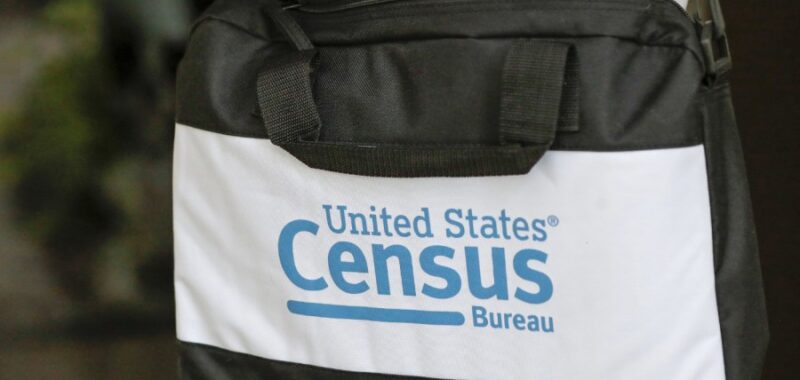
Nobody sees themselves in the word “other.” Nor do they like to be lumped into broad categories that fail to describe who they really are. And when this happens in data used to inform policymaking, these people often become invisible.
Because of a lack of options, nearly 50 million U.S. residents — many of them Latin Americans — checked the box for “other” in the last Census, a 129 percent increase from the previous decade. In addition, people from other backgrounds — including Asian Americans and American Indians — are often forced to check boxes that hide the nuance of their identities behind broad racial and ethnic categories.
In our rapidly diversifying nation, many people lack choices that accurately reflect their race and ethnicity. And that’s dangerous. For example, during the COVID-19 pandemic, members of the Filipino community were dying at disproportionately high rates. Policymakers were unaware because data from the Centers for Disease Control and Prevention showed that Asian Americans had lower case rates and similar hospitalization and death rates compared to white Americans.
Filipino friends shared stories with me of how many people in their families and towns had died from COVID-19. Why weren’t these high death rates showing up in the official data?
My colleagues and I dug deeper, using a crowdsourced website where people posted memories of Filipino health care workers who had died of COVID-19. That’s where we found our answer.
Across the U.S., Filipinos working in health care experienced high death rates that were not reflected in data that lumped Asian Americans into one category. This was particularly evident among Filipino nurses, who make up 4 percent of the total U.S. nursing workforce yet accounted for 26.4 percent of all U.S. COVID-19 nurse fatalities early in the pandemic.
These nurses cared for critically ill patients without the necessary personal protective equipment to ensure their safety. Their experiences were not represented in the data, their needs remained unmet and, as a result, they had higher death rates. And not only did they become ill, but they also transmitted the virus to others in their communities, creating a cycle of sickness and death.
Public health data are intended to help policymakers address the needs of all communities. Having the right data — data that allow us to understand differences within population subgroups — can help us pinpoint the needs of specific communities, allocate resources more appropriately and develop more effective solutions. But if our data fail to capture our population’s diversity, we may fail to meet the needs of millions.
Earlier this year, the Office of Management and Budget updated federal data collection standards for the first time since 1997 to reflect more accurately our country’s rapidly increasing racial and ethnic diversity. For many people, this will be the first time they see themselves represented in federal data.
OMB’s recent changes were a key component of the call to action and recommendations from the Robert Wood Johnson Foundation’s National Commission to Transform Public Health Data Systems, of which I was a member.
Previously, the Census asked respondents to select an ethnicity such as “Hispanic or Latino,” and then choose from five race categories: American Indian or Alaska Native, Asian, Black or African American, Native Hawaiian or other Pacific Islander and white. Alternatively, they could select the option for “some other race.”
The upcoming Census will have seven broad race and ethnicity categories, including a new option for “Middle Eastern or North African (MENA).” This option will allow people from that region to identify themselves accurately rather than being forced to select “some other race” or “white.” Respondents can also choose multiple categories, with subcategories adding more detail.
However, the new standards go further by requiring — not just encouraging — federal agencies to collect more detailed race and ethnicity data to ensure more nuanced data analysis.
These are all significant steps to ensure that our nation’s public health data become more inclusive and equitable, allowing us to direct resources and interventions to those most in need.
Yet, concerns remain. Will federal agencies understand and implement the new standards properly? There is also the question of how the data will be reported. How nuanced should the reporting be? What is the best way to present the data?
These and other questions need to be addressed urgently because the next Census will be here before we know it.
At the same time, safeguarding privacy, confidentiality and statistical stability remain paramount. However, it is also essential that the data reflect all people — regardless of their race or ethnicity. It’s possible to do both. The California Health Interview Survey, which I lead, and which is the nation’s largest state health survey, is proof of that.
The COVID-19 pandemic showed that data can mean the difference between life and death. They are not just numbers; they are the stories of people’s lives, and they provide a path for how those lives can be improved and saved.
Every person behind those stories deserves to be seen for who they are — not as “other,” or hidden inside some broad category of race or ethnicity that makes them less visible. We must act now to ensure that, by the next Census, everyone counts.
Ninez Ponce, Ph.D., is director of the UCLA Center for Health Policy Research, principal investigator of the California Health Interview Survey and a member of the Robert Wood Johnson Foundation Commission to Transform Public Health Data Systems.

